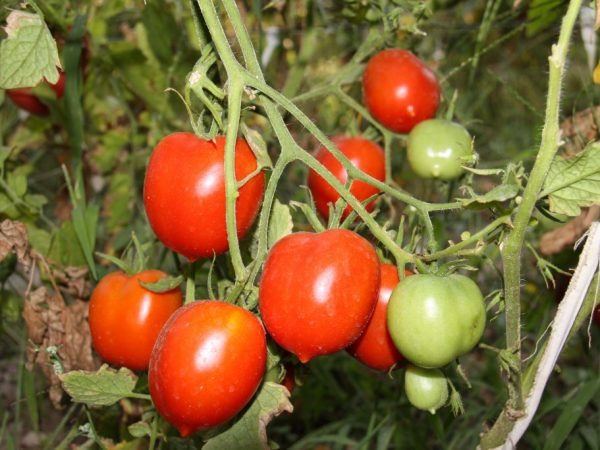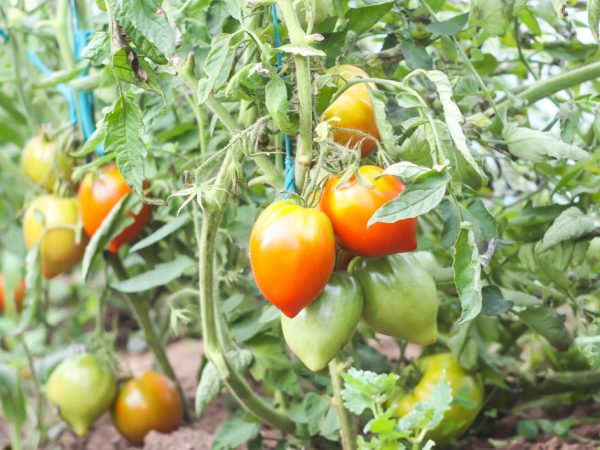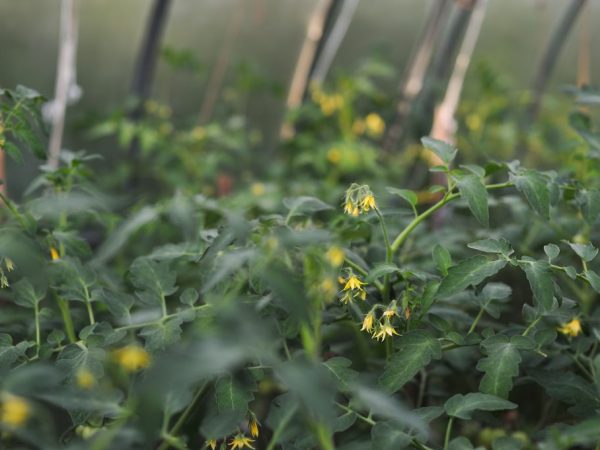Characteristics of Legenda Tarasenko tomatoes
Each vegetable crop in the garden or summer cottage serves to satisfy certain desires of the owner: to surprise with a new original variety, spend less time and effort on caring for the plants. Tomato Legenda Tarasenko is the best choice for those gardeners who want to grow good tomatoes for harvesting for the winter.

Characteristics of Legenda Tarasenko tomatoes
A characteristic of the variety, a description of the features of caring for a tomato will help you make a choice and properly prepare for the new garden season. To create favorable conditions for this variety means to ensure an excellent harvest.
Characteristics of the variety
Legend Tarasenko - a variety of mid-season tomatoes, grown in a greenhouse and in the open field.
The variety is indeterminate, needs pinching, tying. Tomatoes bear fruit until frost.
The name of the variety indicates its origin. A variety of tomatoes was bred by the Ukrainian amateur breeder F.M. Tarasenko from the Sumy region of Ukraine. Tarasenko preferred tall tomatoes. He created more than 50 varieties and hybrids, including popular among gardeners:
- Tarasenko F1 hybrids # 1, # 2, # 3;
- Polesie Giant Tarasenko;
- Anniversary Tarasenko.
Tarasenko's tomatoes are successfully grown in the southern regions of Russia, in the Middle Lane, in Western Siberia. There are positive responses from the gardeners of Karelia and the Arkhangelsk region.
Description of the bush
The tomato bush reaches 1.5-1.8 m in the open field, more than 2 m in the greenhouse. Experts recommend forming a plant in 2-3 stems, then you can get the greatest return. As it grows, it is necessary to remove excess leaves. When pinching, vegetable growers recommend cutting off the processes, leaving 2-3 cm so that new stepsons do not grow from the sleeping kidney.
The bush must be tied up due to its high growth and heavy load on the stem during the setting of fruits and ripening of the crop. 5-7 brushes are tied on each stem.
Description of fruits
Tomatoes Legend Tarasenko has an unusual shape of the fruit - cylindrical with a spout, reminiscent of an inverted budenovka. The brush is complex, 15-25 fruits are tied, according to the reviews of some vegetable growers - 30-40. Each tomato is 80-110 grams, and a ripe brush can weigh 3-3.5 kg. Thus, a crop of 20-25 kg can be obtained from a bush.

The fruits are distinguished by their ability to long-term storage.
The fruits are bright red, dense. The skin is not prone to cracking. Subject to the necessary conditions, tomatoes can be stored for a long time (up to the New Year's holidays), transported without loss. Vegetable growers celebrate the excellent taste of Legend tomatoes. The variety is indispensable for preparing pickles and preparations for the winter, eating raw.
Care features
Breeder Tarasenko F.M. developed a system of agrotechnical measures that allow you to get the maximum yield of Legends tomatoes.
Planting seeds
The timing of sowing seeds for seedlings depends on climatic conditions.It should be borne in mind that seedlings are planted in the ground at the age of 60 days. There are no special requirements for its cultivation. Seed preparation for sowing is carried out traditionally:
- seeds are discarded by placing them in a solution of table salt (1 tsp in a glass of water); empty, damaged seeds float, high-quality seeds sink to the bottom of the dishes, they are selected and dried;
- the seed is heated for 5 minutes at a temperature of 50-55 ° C or for 2-3 days on a battery;
- disinfected in a 1% solution of potassium permanganate for about 20 minutes;
- to increase the yield, the seeds are kept in a nutrient solution of industrial production (Epin, Gumat) or replaced with folk remedies, for example, potato juice or aloe juice;
- before sowing, the seeds are soaked and germinated by placing them in a damp cloth or paper towel, preventing them from drying out and providing oxygen.
For sowing, use conventional containers or cassettes. The soil mixture is prepared from sod land with the addition of humus, peat or sawdust. Seeds are sealed to a depth of 0.5-1 cm, moisten the soil and cover with foil or glass. For germination, it is necessary to maintain a temperature of 20-25 ° C.
After 7-10 days, the trays with seedlings for hardening are transferred for a week to a room with a temperature of 15 ° C, but with additional lighting. The seedlings are grown at a temperature of 18-20 ° C. The dive is carried out in the phase of 2-3 true leaves.
Landing in the ground
Planting seedlings in the ground is preceded by special preparation. A hole of 50x50 cm and a depth of up to 40 cm is prepared for each plant. Humus, wood ash, fertilizers are laid on the bottom; mix them with the soil. Two plants are placed in each such hole.
When planting, it is necessary to provide a normal distance for airing and lighting the bushes: 1 m between plants in a row and 1.5 m between rows. Immediately after planting, young tomato bushes are watered with a warm solution of potassium permanganate at the rate of 3 g per 10 liters of water.
Watering and fertilizing

Plants require abundant watering
Tomatoes Legend Tarasenko do not require special care.
Watering is carried out as the top layer of the earth dries up, usually once a week. Since the plant has a large biomass, a powerful root, watering should be abundant - 7-10 liters for each bush.
After watering, you need to loosen the soil. To reduce evaporation of moisture, you can either mulch the area around the stem, or carry out hilling. In addition to pinching, it is recommended to cut off the lower leaves so as not to overload the bush and ensure good fruit setting and ripening. The planted bushes are fertilized for the first time in two weeks, and then with the appearance of the ovary and at the beginning of fruit ripening.
Diseases and pests
According to vegetable growers, Legend Tarasenko tomatoes are not very susceptible to disease with proper care. Preventive measures include: autumn plowing of the soil, observance of crop rotation (the best predecessors are cucumbers, onions, perennial herbs), dressing of the soil and seeds, adherence to watering rules, loosening the land and removing weeds. With timely detection, the harmful effects of traditional "tomato" diseases can be avoided:
- fusarium (a fungal disease that manifests itself in wilting of plants in hot weather after cold rainy days) is "treated" with copper sulfate or special fungicides;
- late blight (the disease spreads by fungi and affects leaves, stems and fruits) will help to destroy an aqueous solution with milk and iodine, kefir, garlic infusion or special chemicals;
- from gray rot (manifests itself at the end of the season with the onset of cool weather) preparations Barrier, Zaslon will help.
Home remedies (tincture of dandelion, horseradish, yarrow) or chemicals (copper sulfate solution, Confidor, Karbofos) will help against whitefly, spider mites.
Reviews of gardeners
According to summer residents, the Legend of Tarasenko shows itself perfectly provided that the soil is properly prepared - you need a good nutritious soil, since the plant is large, the roots reach 1.5 m.There are legends among gardeners about the yield of Tarasenko's tomato selection. The popularity of the variety is evidenced by the fact that in some farms it has been grown since the 80s of the last century.
Many vegetable growers note that, according to the description, the Legenda Multiflora tomato is very similar to the Legenda Tarasenko variety.
Conclusion
Tall tomatoes Legenda Tarasenko are convenient for growing at their summer cottage. Several bushes will provide seven tomatoes for fresh consumption and preservation.
The experience of F.M. Tarasenko shows that the development of new varieties of vegetables with excellent consumer qualities can be the work of not only professionals, but also enthusiastic amateurs.


